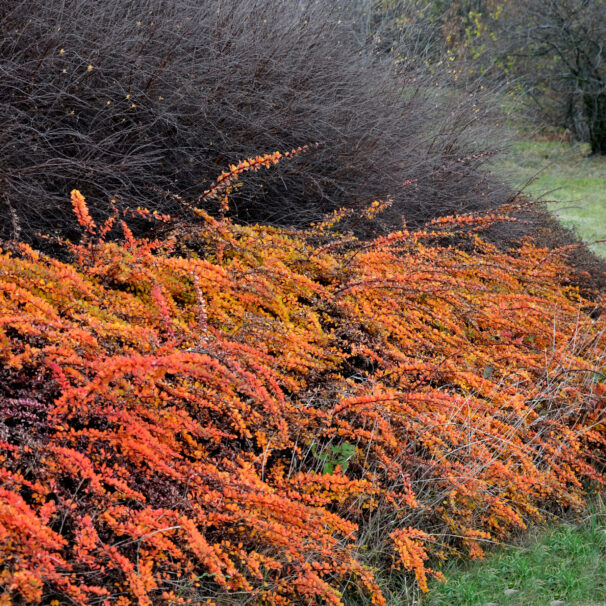I spent time yesterday and today developing a landscape plan. As I started the process, I was worried about my lack of knowledge of what would grow in this area, and what would look good. As I refined my set of requirements, the number of options facing me got manageable and I was able to draw up a reasonably priced plan that I’m confident the HOA will approve.
I’m going to share my process with you.
I should also share up front that my background is systems engineering—so I tend to think in these terms for most of my life decisions.
The first thing I did was to establish the requirements.
I like requirements. This helps me to limit my choices based on things that are fixed. For this landscape design project, establishing the requirements meant defining the area that needs to be planted, determining the ‘look’ desired (i.e. color, flowering, deciduous vs evergreen, attractive to bees, butterflies, unattractive to rabbits and deer), features desired (i.e. fountains, landscape rocks), and understanding limitations (i.e. height restrictions, amount of sunlight, water access and drainage, and maintenance considerations).
Details, Details
For this project, my fixed parameters included the area size which is a 10-foot by 11-foot open bed surrounded by large, mature foundation plantings. There also is a window that I don’t want to block, a stoop on one side of the bed, the direction that the house faces which is northwest defining the available light, the planting zone is Zone 6, and watering will come from the sky.
That was the beginning of my requirements definition.
One could argue that I could block the window, move the stoop and take out the mature plantings. From my perspective, I like the light and view so not blocking the window is a positive, and to keep my budget in check, I am not going to move the stoop and I’m going to make use of the existing foundation plantings as I develop the new plan.
Next, I needed to address some choices.
I considered adding a couple of rocks, but with the small size of the bed to be planted, I decided that wouldn’t work at this point in time. If my ground covers don’t do what I need them to do, I can always address that in the future. No added features. Time to move on.
Once I had established the requirements, I was ready to move on to the next stage of work, the design phase.
Proper Research
For landscape design, this next phase involves researching the available plants available to meet the requirements as well as researching the options and specific requirements for any visual features desired.
The number of plants available in Zone 6 for part sun/part shade, moderate water, and differing heights was huge. I needed to scope that down quickly or this project would require a master gardener.
I walked the neighborhood
Taking note of what plants thrived. Anthony Waterer spiraea and all forms of hydrangea and hosta were large and happy. There were junipers, yews and arborvitae prevalent as well. So, that defined my starting point. Since I like most of those plants, and they do well locally, it greatly focused my attention and allowed me to eliminate many contenders for the garden.
My next stop was to walk a few landscaping businesses to see what planting materials were readily available. No sense in wanting an Anthony Waterer Spiraea if you can’t get one easily. This also gave me the opportunity to see some new hybrid options that the designers of the 40 year old neighborhood didn’t have available.
I found the cutest little arborvitae, called Anna’s Magic Ball. Before walking around the landscaping lot, I admit I had a strong bias against anything arborvitae. I recall my dad planting a wall of arborvitae that over time grew into an impenetrable hedge for humans, about 20 feet tall, that required constant pruning. I should note that wasps liked to nest in the arborvitae. It was never fun to be the one doing the pruning. Besides, I like free-form bushes.
Anna’s Magic Ball is the cutest yellow-green ball that doesn’t grow too tall or bushy. It keeps its shape, which is just fun, and provides for year-round interest and color. That one is definitely going into my plan.
I decided on a compact hydrangea with white to pink blossoms that turn to a deep red in the fall. Even the name made me smile: Tidbit. Another plant had made the list.
And so it went, until I had quite a list to return to my desk and ponder. By ponder, I mean research.
The Missouri Botanical Garden website.
This group, founded in 1859, has a mission to “discover and share knowledge about plants and their environment in order to preserve and enrich life.” I could get behind that.
Their plant finder page gave me access to information such as sun exposure, water requirements, soil drainage parameters, problems, and other things to consider. My list narrowed down as I found some of my choices were not as cold hearty as I would like (last winter we experienced -7 degrees) and other considerations.
By the time I was finished, though, I had a list of five plant types that I felt would do well in that small space, fit my budget, choke back weeds, and give some spring through fall color. Even in the winter, there would be enough variation in the evergreen colors to be nice to look at.
It was time to design
I began to develop drawings to understand color relationships, the relative heights of mature plants and their spacing which drives the numbers to be purchased and ultimately the cost. I looked at where I could place taller plants, where I needed short ones, and where to showcase Anna’s Magic Ball arborvitae. Have I mentioned how much I like this plant?
Working within the constraints I now understood, and the needs of the plants, it was short work to lay out a plan that incorporated the plants I want to use and create a landscape bed that will work for years to come.
Did this take a long time?
No, primarily because I had so many constraints on my work, and because I was willing to fit into the landscape themes already present in the neighborhood. Much of my work had been done for me by others who did it 40 years ago.
If I had started with no limits, it would have been a much harder process.
I find that people who have a difficult time making decisions come to that place because they have too many options, a situation that arises when they have not taken the time to establish the requirements. Understanding the requirements driving a decision will significantly scope down the available options. As each requirement is established, usually a small pooler of options remains. If the requirements are well defined, the choice becomes straightforward.
I’ve now put the documents together and hopefully the landscape approval committee in my HOA will be as happy with my plan as I am. With luck, I’ll be planting next spring!
[P.S. Plan has been approved!]


